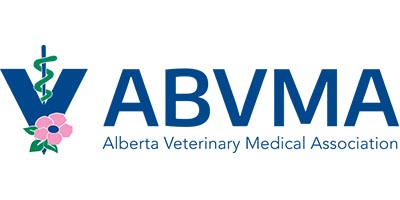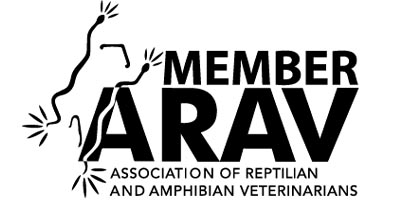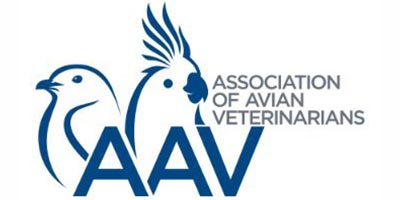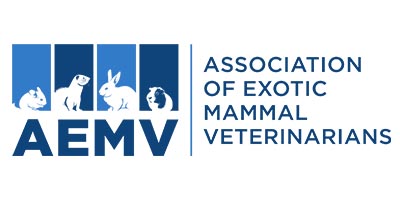Gerbils are busy and intelligent animals originating from the Mongolian desert. Gerbils naturally live in colonies and because of their highly social nature, it is recommended to have at least two gerbils living together to help maintain their physical and mental health. To safely house gerbils together, they should be introduced before puberty or kept in family groups. Gerbils are territorial, so late introduction of a new gerbil can result in conflict. Successful introduction of a new gerbil into an established colony should be done gradually.
Gerbils communicate with each other by marking objects with scent glands, located mid- belly, with secretions from the Harderian gland, which is located near the corner of the eye and which drains out the tear duct, by foot thumping, vocalizing and by grooming each other.
DIET: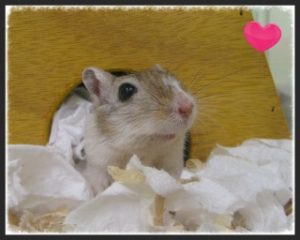
In nature, gerbils are omnivorous and eat leaves, grasses, seeds, nuts and some insects. They forage for their food and will stash some for later. All rodents will eat selectively and overeat preferred food items, so it is important to control the amounts of fatty foods in a diet. Choose a varied seed mix and then remove the high fat sunflower seeds. These can then be hand fed to each gerbil as both a fat supplement (2-4 per day) and a training tool. Commercial rodent pellets or blocks should be included as part of the daily diet and one or two can be placed in the cage for the gerbils to gnaw on. Loose grass hays such as timothy, orchard or meadow grass can be put throughout the cage or offered in the form of grass toys or biscuits for the gerbils to chew. Sprinkling the food throughout the enclosure rather than placing it in bowls encourages the gerbils to forage and helps with mental well-being. Treats can include small pieces of unsalted roasted peanuts, almonds or walnuts or small pieces of unsweetened cereals. Fresh foods such as lettuce, kale, carrots or apples can be offered in small amounts, but should be removed if uneaten so the gerbils don’t stash food items that can spoil. Do not exceed 1/2 teaspoon of treat foods per day and do not begin to feed these items until the gerbil is 2-3 months of age, to avoid upsetting the digestive tract.
WATER:
Fresh water should be available at all times and sipper tubes should be cleaned daily and checked to ensure they are not clogged with food.
HOUSING: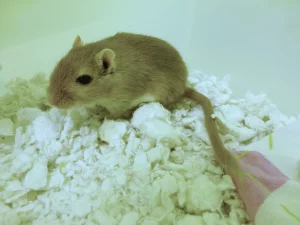
Gerbils spend most of their time chewing and digging, creating an extensive network of tunnels and burrows in which they sleep, store food and raise young. Suitable enclosure styles for gerbils take this into consideration and either a glass or plastic enclosure with a well – ventilated mesh top or a sturdy wire top with a deep plastic base that allows the build up of nesting material is preferred. Enclosure size should be determined by the number of gerbils in the colony, but bigger is better!
Cage furniture, such as beds, tunnels and nests provide environmental enrichment and privacy and are necessary for psychological well-being. Deep bedding, preferably of a soft or shredded paper or aspen wood should be supplied and must be non-toxic, absorbent and dust free. Avoid using kaycob or pelleted bedding as these do not allow the gerbils to successfully create tunnels and do not use cedar or other scented wood shavings as these can predispose the gerbils to serious illness.
Gerbils are avid chewers and should be supplied with quantities of paper towel or toilet paper rolls, small cardboard boxes, wooden chew sticks or timothy hay blocks or toys for gnawing. Lack of appropriate chewable materials can result in repetitive bar chewing or incessant corner digging, both indications of stress.
As desert animals, gerbils produce little urine. Thick bedding can be cleaned weekly, depending on enclosure size and number of gerbils in it. Saving a small amount of the ‘used’ bedding and putting it back with the new bedding helps preserve the carefully scented nesting material the gerbils worked to create and placing items back to their original position helps decrease the disturbance to the colony. Cleaning should be done with mild non-scented and non-toxic products and everything should be carefully rinsed and dried.
Some gerbils will use an exercise wheel. These should be solid and carefully suspended as incorrect placement or wire wheels can cause leg and tail injuries. Enclosures should be securely fastened and out of the reach of other household pets.
Gerbils maintain their fur by grooming each other and by taking a sand bath to help remove oils from their coat. Providing gerbils with a small dish of sterile play sand once a week allows an opportunity for the gerbils to roll and clean their fur.
Gerbils are desert animals and require a dry environment with good ventilation. They are particularly sensitive to low frequency sounds (including the human voice), so enclosures should be situated away from televisions, stereos and busy people traffic areas to decrease stressing the colony.
PHYSIOLOGY: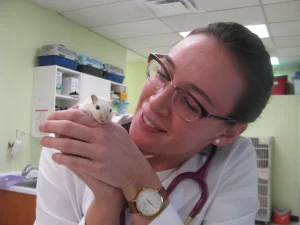
Gerbils live an average of 3 – 5 years. Gerbils can breed after 65 days of age, are pregnant for 24-26 days and have litters of 3-7 pups that wean by 24 days. To prevent unwanted offspring, house only same sex gerbils in groups. Offspring of a breeding pair of gerbils will not breed until they leave the nest. To keep a bonded male and female together and prevent breeding, a veterinarian with experience in exotic mammals can neuter the male.
HANDLING:
Gerbils can be easy to tame and learn to know their owners by smell. Earning a gerbil’s trust can be augmented by using small bits of a favourite food item, such as a sunflower seed, as a positive reinforcement tool. Allowing the gerbil to first get used to the hand leaving the treat in the bars, followed with feeding through the bars, then slow lowering of the hand into the enclosure with the treat on the palm allows the gerbil to learn a hand is not to be feared. With patience and reward markers, gerbils can be trained to perform tricks and run mazes!
A tamed gerbil will climb into a cupped hand. Never grab a gerbil by its tail; the tail skin will pull off exposing the muscle and bone. This was developed as a defense mechanism against predators and is unfortunately a common injury of pet gerbils. Gerbils can be held gently at the tail base, but it is recommended that only someone with experience catch a gerbil like this. Untamed gerbils can be gently scooped up using a cup or small box to move it from one spot to another. Gerbils can jump from any height. It is recommended that young owners sit on the floor while playing with their pet gerbil to prevent falling injuries.
WHEN TO CALL A VETERINARIAN:
Nasal Dermatitis: Gerbils often get sore noses as a result of continual gnawing at wire bars or digging in incorrect substrate. Called ‘red nose’, the area becomes red, raw and can get infected, requiring oral antibiotics and cage modification.
Tail Slough: Improper handling of a gerbil can result in the fur and skin peeling off the tail and exposing the bone. In some cases, the tail will need to be amputated.
Epilepsy: Gerbils are prone to epileptic seizures that vary in their intensity and are usually triggered by sudden stresses.
Neoplasia (Cancer): After two years of age, gerbils can develop different types of cancer. Female gerbils are prone to cancer of the ovaries. Skin tumours can develop around the ears or feet. Both male and female gerbils have a scent gland on their abdomen that can become cancerous.
Like all species, gerbils can develop kidney problems, respiratory infections and digestive tract upsets. Any time a gerbil changes eating or elimination habits, shows signs of weight loss or a lack of energy, sneezes or has respiratory changes, it warrants a veterinary visit.
Every pet gerbil should visit a veterinarian skilled in rodent care bi-annually to aid in early detection of problems and to allow a chance to update owners on the latest in care and husbandry.
THIS INFORMATION IS MEANT AS A GUIDELINE ONLY AND IN NO WAY REPLACES CONSULTATION WITH A VETERINARIAN.


